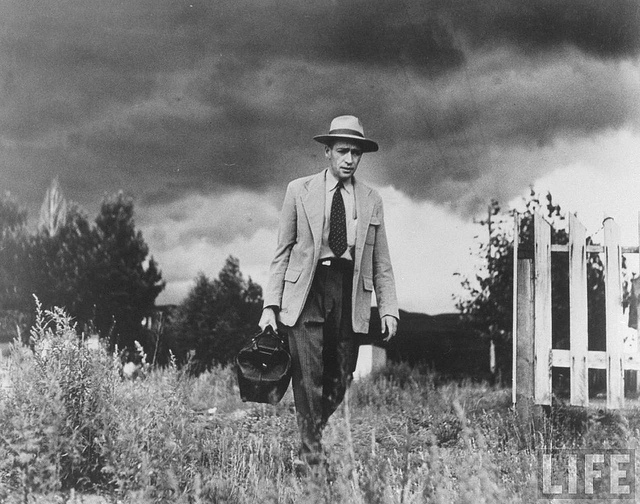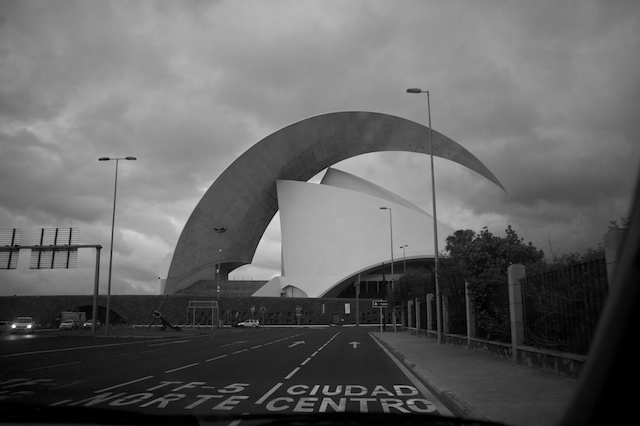Re-thinking
If it is the struggle along the way what counts the most, I guess I should be happy to be going through this struggle even before I step on the road. Well, I wouldn’t say I am feeling exactly happy but, I comfort myself (re)thinking that this is how it should be.
I gave myself a month to choose a topic for the Re-think project and I spent that time going around several ideas. When the month came to an end, only one of those ideas seemed to have sticked… document my surroundings; try to explore the love/hate relationship I have with this place I was born in, and also, in a way, try to break with the stereotypes that the tourism industry uses to bring people to the island no matter what.
Anochece en El Teide from RosaVerde on Vimeo.
As soon as the decision was made, I got really scared. How am I gonna do that?
Can I look at this place in a different way to what I am used to? I don’t want to just look at the negative side of tourism. I don’t want to stigmatize the poorer, less touristic, areas of the island… so what do I want to do? I just want to show the island as it is, as I see it, and one thing is for sure: the image sold by the tourism industry is not a documentary vision but a commercial one.
Sounds great but… still the same unanswered question: how am I gonna do that? No idea.
The other day, looking at Jocelyn Bain Hogg photos, the first thought that came to my mind was that his series somehow define very well the british society. So, how does he do it? What’s the magic behind his pictures? What can I learn from them and how can they help me find my way through my own project? Is street, candid photography what comes closer to showing the genes of a society? More question to get answers to…
Turistas en Los Roques de García con Teide de fondo from RosaVerde on Vimeo.
In terms of trying new ways of doing things, I’ve started to test a medium format camera, a Bronica SQ-A. It’s not easy to use and it’s terribly expensive. And… well, I just got my first set of negatives developed and I have no to way to scan them, so… after a couple of weeks since the actual shooting, I haven’t seen the photos yet. Not something I am used to. On the other side, in a couple of days I should have in my hands a Fuji X100 which I hope would be less showy than my loved, bulky, D3, and so, it will let me do some more of this candid street photography I am thinking of.
I know, these days, a popular way of presenting documentary work, is doing a multimedia piece, and I guess it is something that we all ought be learning to do given the current industry trends. However, I have a sort of problematic relationship with multimedia: I find 99% of them extremely boring, they don’t retain my attention for more than five seconds. And that remaining 1%, are usually done by extremely good filmmakers. So, I am gonna leave the multimedia to those passionate about it and I’ll try to find some other way to show my work. What that’s gonna be, is yet another un-answered question.
On our relationship with death
We all die and yet death is something that always take us by surprise. We never seem to be ready to deal with someone’s death perhaps because, being sort of a taboo topic, we hardly ever talk about it. But, why is it so? This is a question that keeps going around my mind once and again since as a teenager a waited for months around a hospital room for my father to die.
To analyse and try to understand this life/death issue, I have a project in mind that would take me to spend quite a bit of time in the surroundings of that first encounter with death. The question is: am I ready for it? I guess the honest answer would be… no, no yet. But I do feel that life, from to time, throws me into situations that slowly walk me into the frame of mind required for such, still disturbing, subject matter.
For the last few years, every November 1st, I’ve gone to the cemeteries to take photos of people visiting their relative’s graves, on that day, specially decorated for the catholic celebration of All Saints. It’s always been hard to approach people in this deep sorrow mood. I guess, in this corner of the world, we have assumed that taking photos around death ceremonies is not all that well seen. But this is something that doesn’t happen in every culture as I unexpectedly found out last September in Nicaragua.
One day, while wandering around the streets of the colonial city of Granada, I bumped into a funeral procession. As it looked pretty peculiar to me, I thought it would be interesting to take some pictures. So I decided to follow the procession up to the cemetery. Concerned about how my presence there would be understood, I politely asked it was ok for me to be around with the camera. To my surprise, they said that “not only was ok but an honour”. Still trying to digest this ’honour’ idea which was so different to what I would had expected in my culture, I realised that I was not the only one with a camera in hands. The funeral was being recorded on video and also, people were approaching the coffin, not only to say good bye but to take one last picture of the dead with their mobile phones. That vision shocked me at first and then immediately took me back to my long-standing question: why do us people in this part of the world, have such a harsh relationship with death?
While I keep looking for answers, here are a couple of images of a beautiful farewell to a love one.
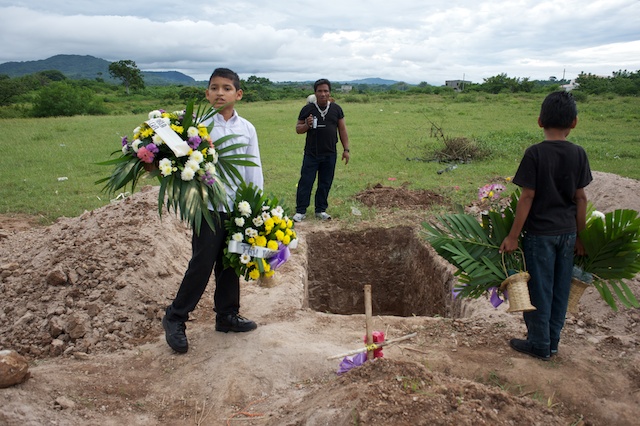
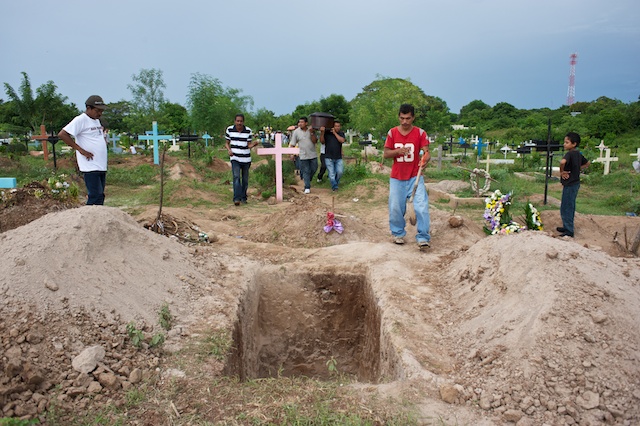
I’ve just realised that, perhaps because of my own harsh relationship with death, I have censured my edit. I do have photos of the dead being photographed but, my sense of respect tells me that there is no need to show them. But, why? Somehow, I now feel that my sense of respect would not agree at all with their idea about the meaning of those photos.
Physical vs emotional distance
I have recently found myself trying hard to use the 50 mm lens to take street portraits (I usually only carry the 50 and 28 mm lenses with me). It turns out that in every single attempt I have have to go back to the distance I feel more comfortable with: the 28 mm lens. I know the theory says that wide angle lenses are not good for portraits but, despite distortions, that seems to be the distance that works for me.
Knowing that, I now keep asking myself about the relationship between the physical distance and the emotional connection I establish with my subjects.
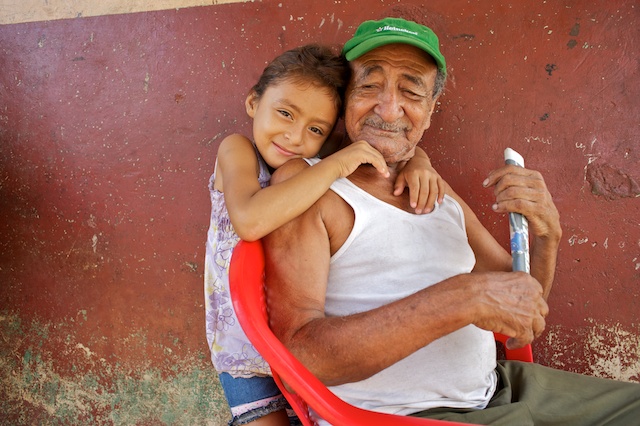
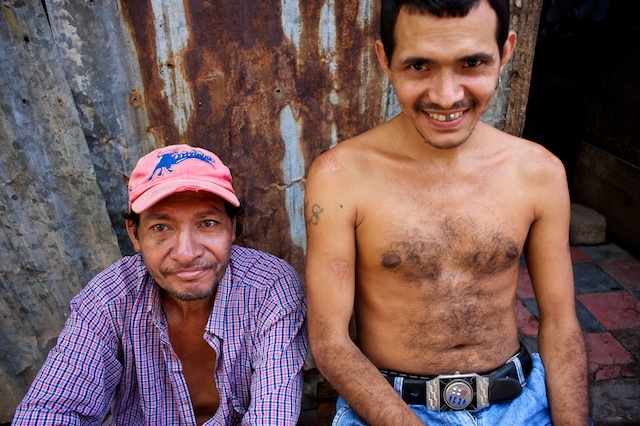
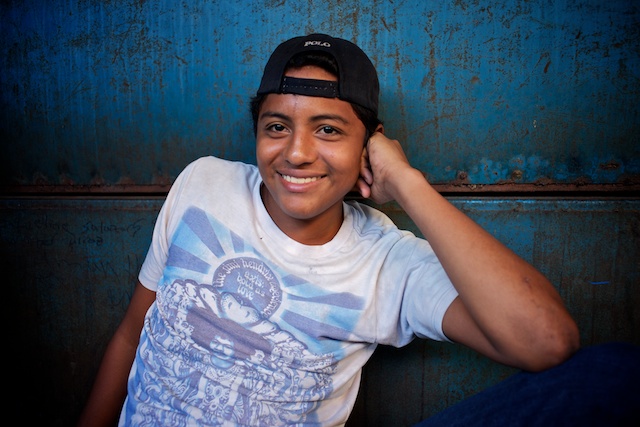
Matías
I am sad.
Yesterday, while walking around the market of the City of Granada in Nicaragua, my mind was unconsciously looking for a man I had photographed in that same place two years ago. I never knew his name or anything about him but he has since been very important in my photography.
The portrait I took of him represented the very first time I managed to see something I wanted to photograph, anticipate what was about to happen, notice the combination of strong lights and shadows, and have the camera ready to not miss the moment. All in a fraction of a second and yet, still one of my happiest fractions of a second. I feel proud of that portrait.
Yesterday evening I met Demetrio, a local photographer, and we immediately started to share adventures around photography. As I was showing him my photos of Nicaragua, all people in his studio started to gather around the computer screen saying… “look, it’s Matías!”. “He died a year ago” – they explained to me.
I am sad to know he is gone and, although he never saw that portrait I took of him nor he knew what it meant to me, today I feel the need to thank him and, through him, thank all the people who has ever given me the great little treasure of a fraction of a second.
Thank you Matías. Nice we crossed roads!
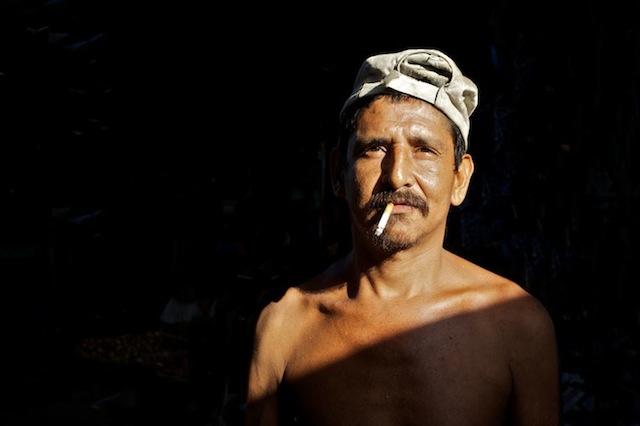
The night Paper Today saw the light
When last January I started taking photos at the print-room, I never for a second imagined that this project would take me to such a beautiful end. I love photography and I love written words and, one of my dreams has always been to able to put them together in a publication. Paper Today is, in a way, my first successful attempt to such goal.
It’s funny to now look back and realise that it really wasn’t something planned at all. It happened because a friend introduced me to the people at García y Correa (GyC); it happened because Pedro Martín, logistics manager at GyC, got interested in the idea, showed me his passion for the business and introduced me to the people at TFPrint. It happened because Ricardo García de Viedma, (TF Print Manager), loves to show the magic behind printing a newspaper; it happened because all workers at both, GyC and TFPrint, welcomed me warmly into their daily nightly routines.
As a result of all those believes and passions, the night of August 15th, 2012, Paper Today was printed, between the Daily Mail and The Sun, as if it really was another one of the twenty something papers printed that night. These images, taken by Omar García while it was happening, show my happiest face.
Thanks all for your passion and your help to make this dream come true. Forever grateful!
[portfolio_slideshow size=full]
Paper Today is published, I am happy















Title of publication: Paper Today
Name of artist: RosaVerde
Design: RosaVerde
Press: TF Print, Bermont Corporation
Publication date: July 2012
Place of publication: Tenerife, Canary Islands, Spain
Edition size: 500
Format: newsprint
Size: 370 x 289 mm
Number of pages: 28
Type of printing: Offset
Type of paper: newsprint
Number of pictures: 46
Price: Free
Description: Paper Today is an attempt to document the process of getting out a daily printed newspaper; mainly, the printing and distribution tasks, which, given the way digital technology has changed our news consumption habits, are two industries facing the edge of radical transformation.
[And well, yes, I love SP,BH, in case you didn’t notice ! ]
A newspaper is being born
Lord, forgive me for the temerity and then, before anything else, please send me a photo editor, an InDesign expert, a layout guru… Well, Eugene Smith would do. Thanks!

Smith and Stockholm
My thesis was to prove that, despite the many times it has been said, Smith is not the father of the photo essay. 3000 words later, I am not so sure about it anymore. Could I be going through symptons of Stockholm syndrome?
Enjoying the acrobatics
I am slowly walking my way out of illiteracy. Yes, illiterate is how I’ve felt from the moment the MA classes started and I realized how little I know about photography.
And, as there is only one way to go over that, I am spending long hours reading, hoping to soon wake up my student brain. Well, the process is slow. Work, picture taking, picture thinking, picture reading, picture everything, more work and then a little bit of friends, family… life. It turns out that my life is currently kind of an acrobatic exercise: a continuous struggle for balance, lots of adrenaline, scary and very stressful at points, yet so joyful.

I started the reading having in mind the list of essay topics we’ve been given, hoping that, at at some point, something would click in my head to let me know what I would write about. It certainly did. For a couple of weeks now, I’ve been obsessed with Eugene Smith’s life and work. But, because I cannot get hold of some important bibliography (the books are out print and second hand copies are very expensive), I made an attempt to find another ’obsession’. No, it didn’t work. It looks like Smith came to stay and so, he’s the one despite the shortage on book resources.
His extraordinary essays on regular people, have made me doubt a lot on the photo essay I’ve chosen to work on. Suddenly I wanted to follow one person just as he did. And well, I do have a story along those lines which, for a year now, is urging me to find its way out.
I know there is a story behind her, and it’s not just about boxing, but, so far, boxing it’s all I’ve managed to portrait. I’ve decided I will let that story mature at its own pace.
It’s time to focus on ’those papers’ that are making me drive around at insane hours. Waking up at 4:00 am, or staying up very late to take pictures it’s proving a hard test on my driving forces. I won’t lie here, when the alarm clock sets off, I do no more but wonder what’s the point of it all. There are very few things in life I enjoy more than a long night sleep. And yet, so far, in the hard battle ’sleep’ vs ’the great feeling of coming home with the photos done’, photos win.
Photo essay: Lucha Canaria
WHAT
La Lucha Canaria, Canarian Wrestling, is a traditional wrestling sport from the Canary Islands. The earliest record of its practice dates back to 1420 and it is thought that the native inhabitants of the islands, Los Guanches, brought it from North Africa. It is part of the folk of the islands and still a, nowadays, widely practiced sport with local leagues and inter-island competitions throughout the year.
La Lucha Canaria takes place in a large sand circle, called terrero, and its objective is to force the opponent, using techniques called mañas, to touch the sand with any part of their body except the feet. Two falls are required to win the round. The match ends when all the members of one team have been defeated.
MY MOTIVATIONS
I am a sports fan, an enthusiast in the most general sense. I have always enjoyed playing, watching, photographing…, all sorts of sports. All but one: the Canarian wrestling. It’s the most traditional sport of the place where I was born and yet I have always felt some kind of antipathy to anything related to it. The reason for that being that, as one of the most representative activities of the folk, it has many times been given nationalism connotations. It is often said that La Lucha Canaria is ’our sport’, (”lo nuestro”) with that ’our’ not just being a simple adjective but a strong remark against the ’other’, an opposition, and disrespect, towards anything not ’ours’.
I certainly don’t feel comfortable with those ideas, and so I have kept myself far from this and other forms of folk. Nevertheless, in the back of my mind, there was always the thought that perhaps I was not being fair to an ancient activity followed by so many people along many generations. And so I set myself the task to try and discover the Canarian Wrestling as a sport, away from any other, political, cultural or social conditioning factors.
What I found has little to do with of all those preconceived ideas, and a lot more with what makes a sport a big event: competition, rivalry, effort, team spirit, aesthetics and, above all, passion.

Juanín Márquez and Ricardo Rodriguez from CL Tegueste in their locker room, getting ready for the match against CL Victoria.

Alfonso González and audience looking at the wrest taking place on the sand.

Rucaden Gonzalez, captain of CL Tegueste, gives advice to Ricardo Gonzalez, aka Medianito IV, as he steps on the sand for a fight.

Terrero Mencey Tegueste, general view.

Medianito IV beats his opponent

Alfonso Garcia, Destacado A, of Club de Lucha Tegueste, jumps of joy together with his team mates and their fans, as they win the match against Club de Lucha Victoria.

Ricardo Gonzalez, aka Medianito IV, celebrates victory over CL Victoria.

Ricardo Gonzalez, aka Medianito IV, gets money from his fans after beating his opponent.

A kid wearing a Medianito IV shirt, looks at his idol as he is interviewed by media.
